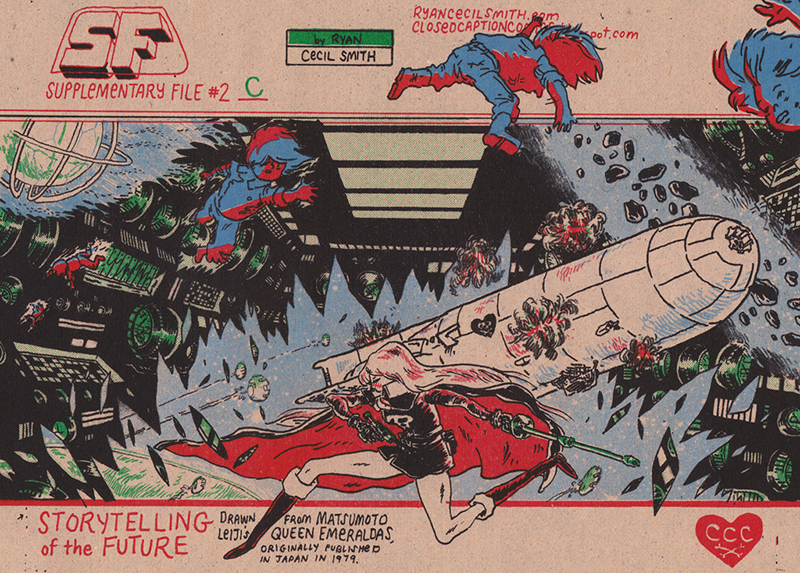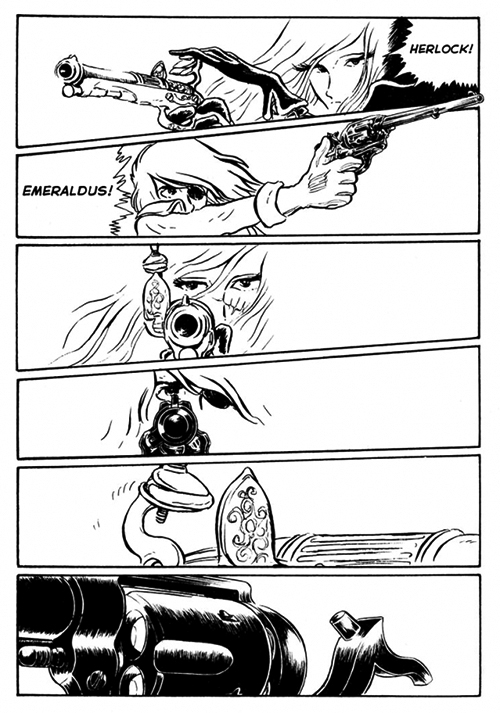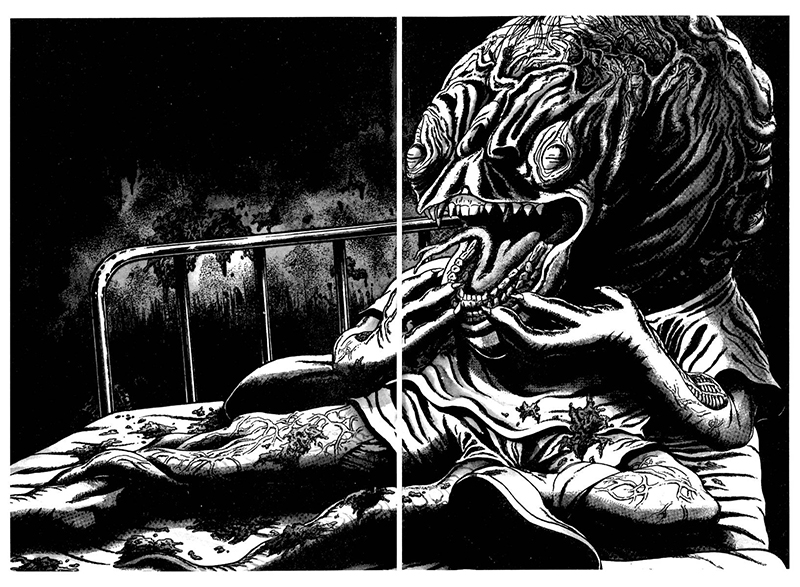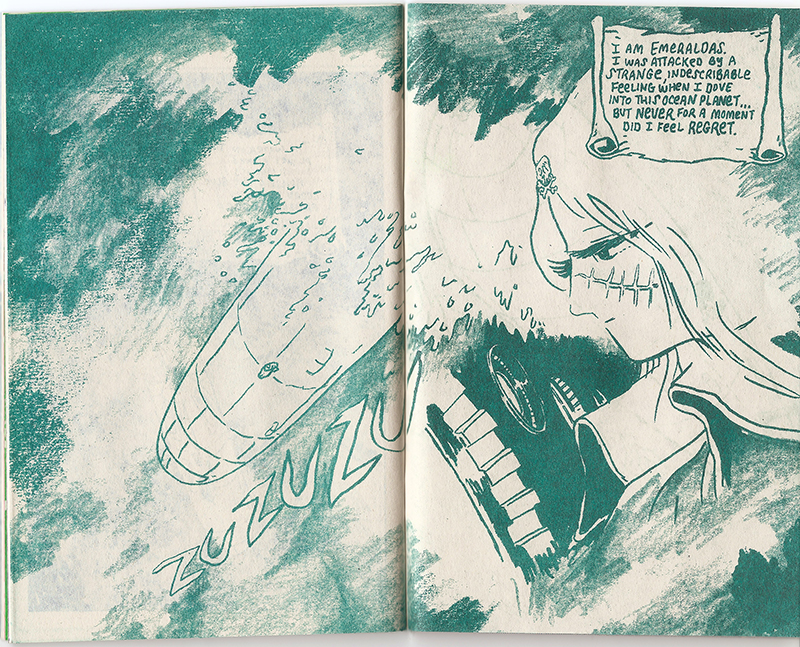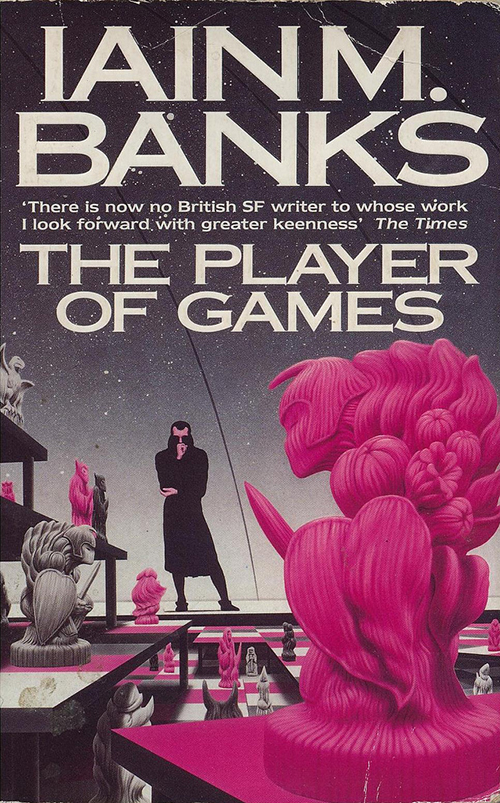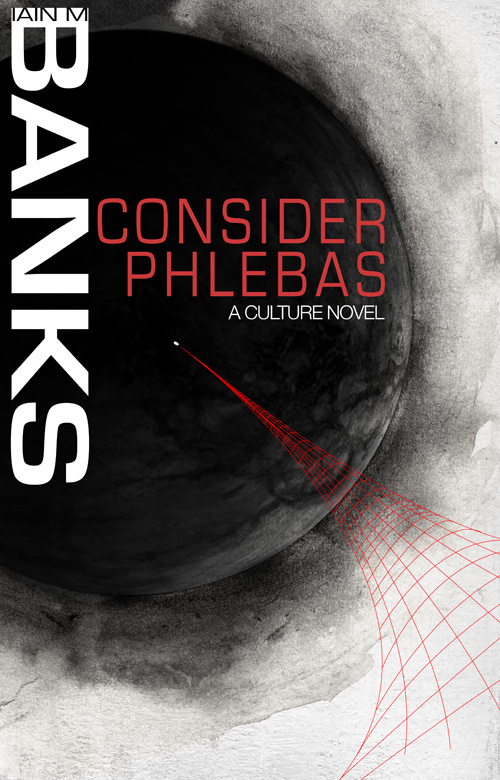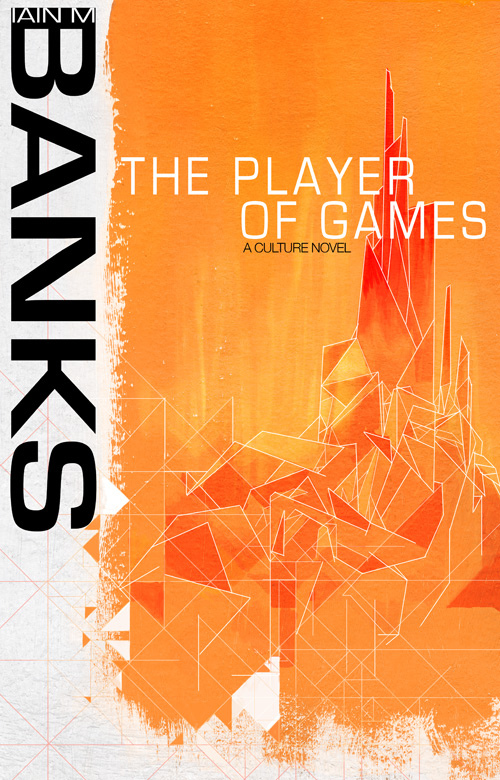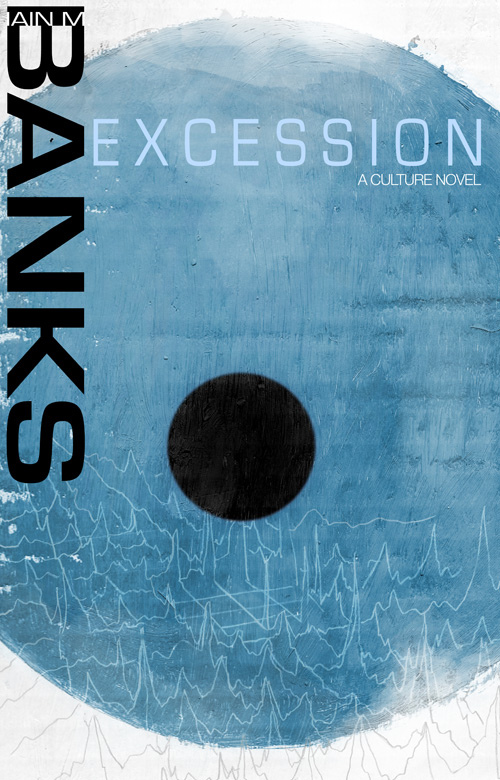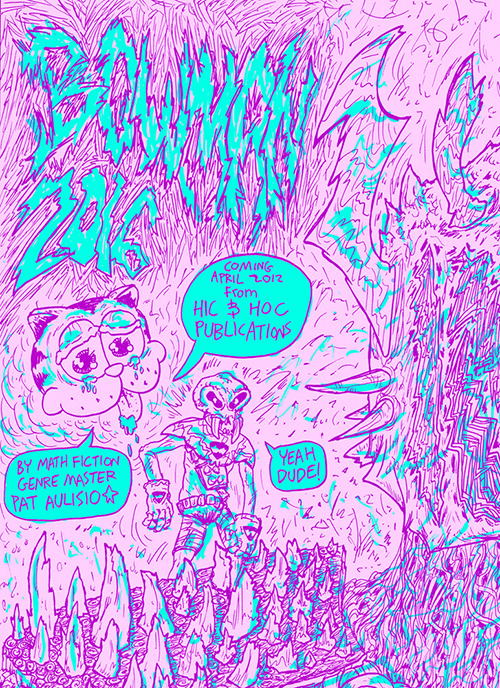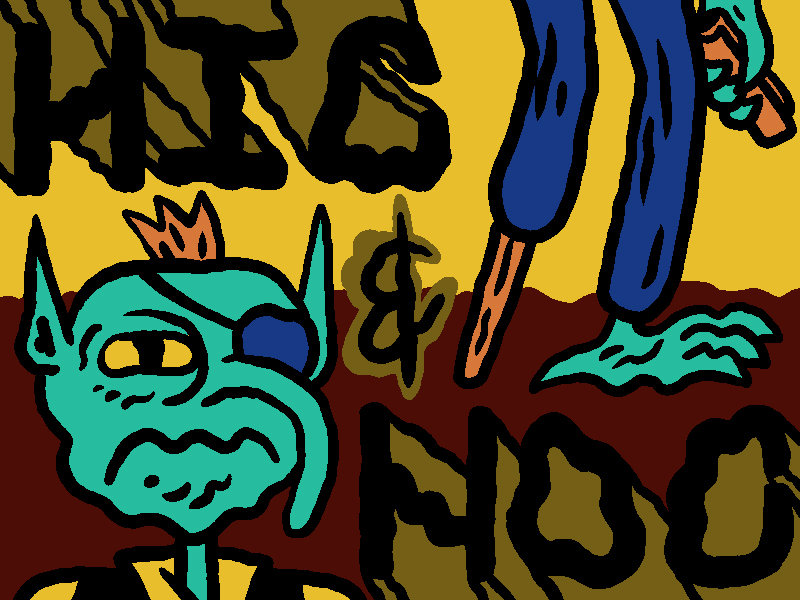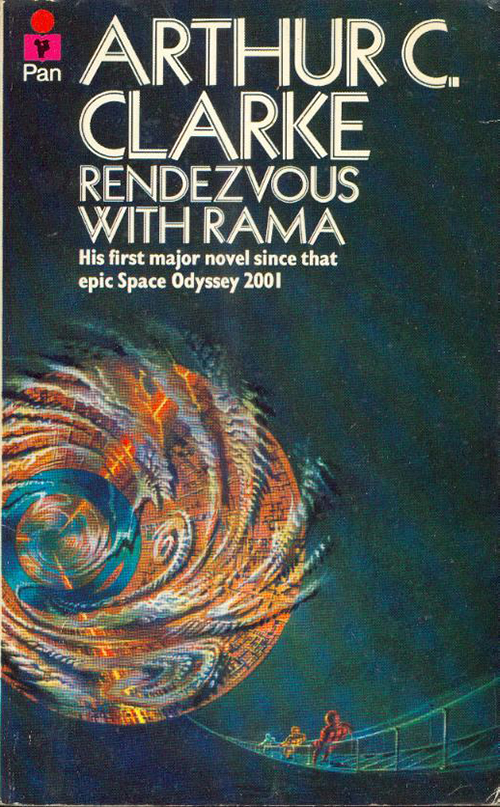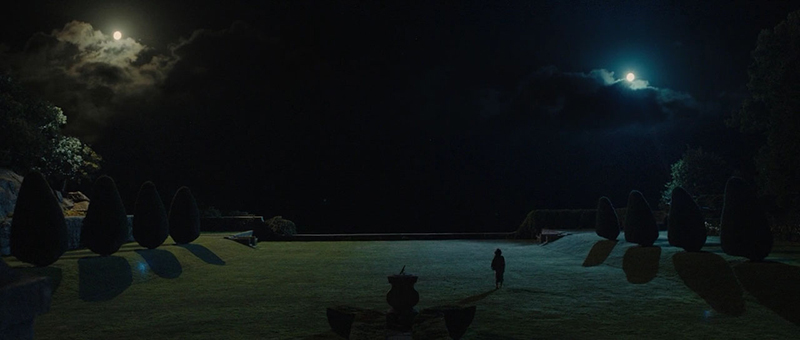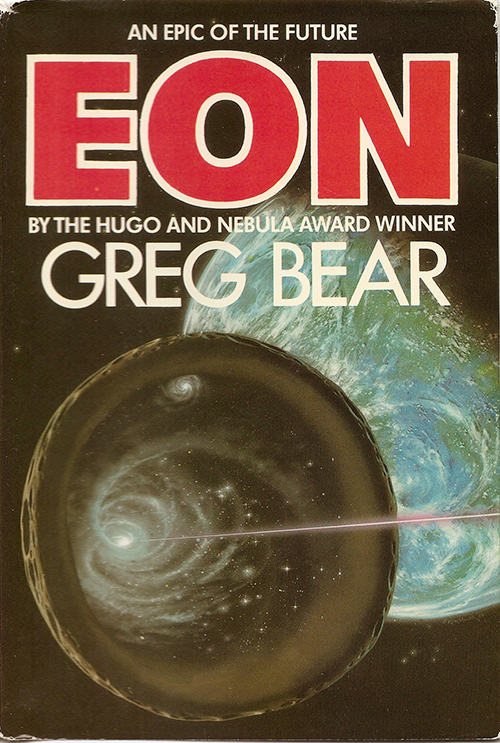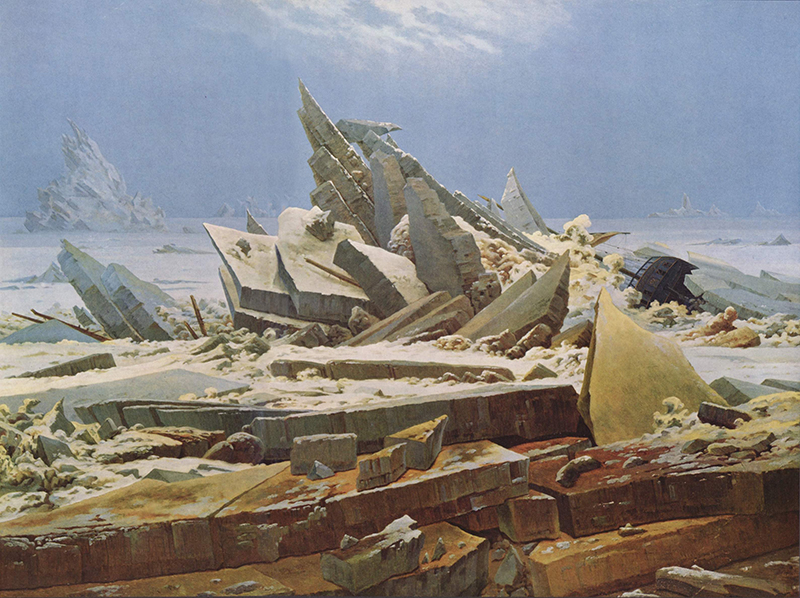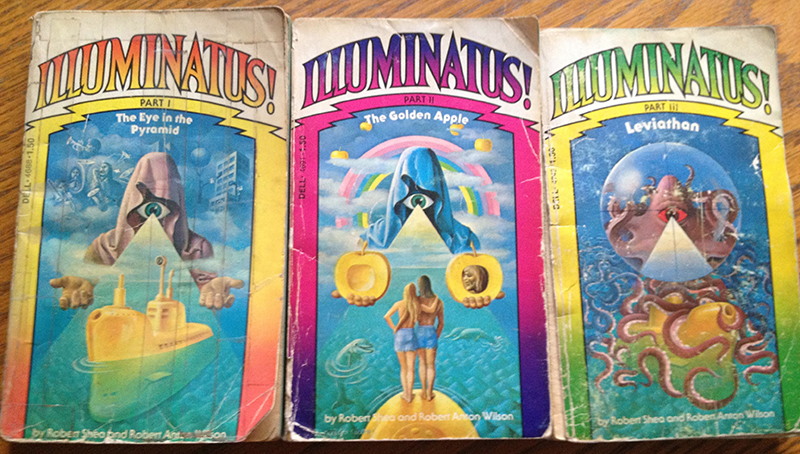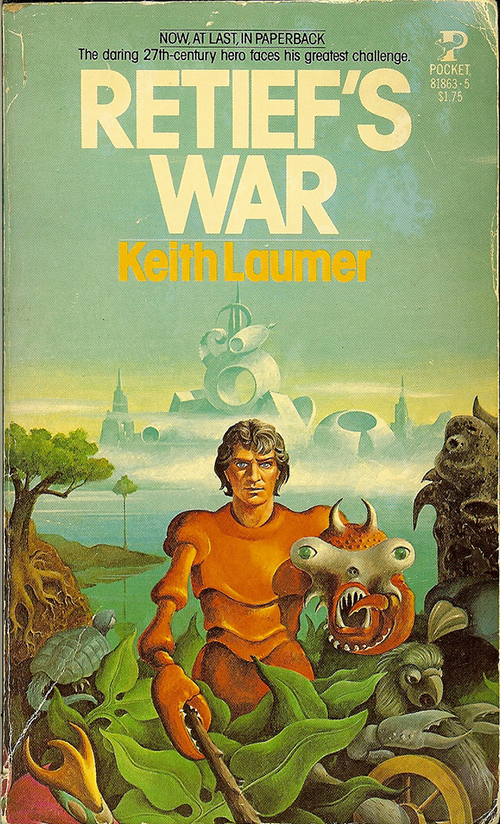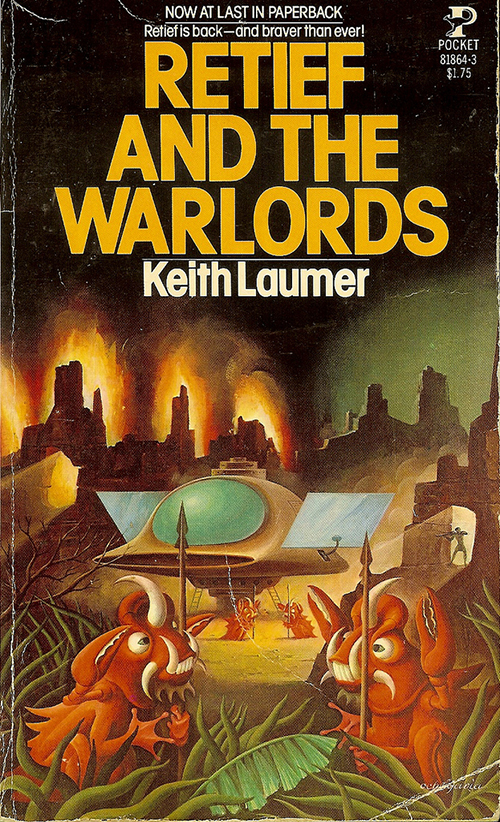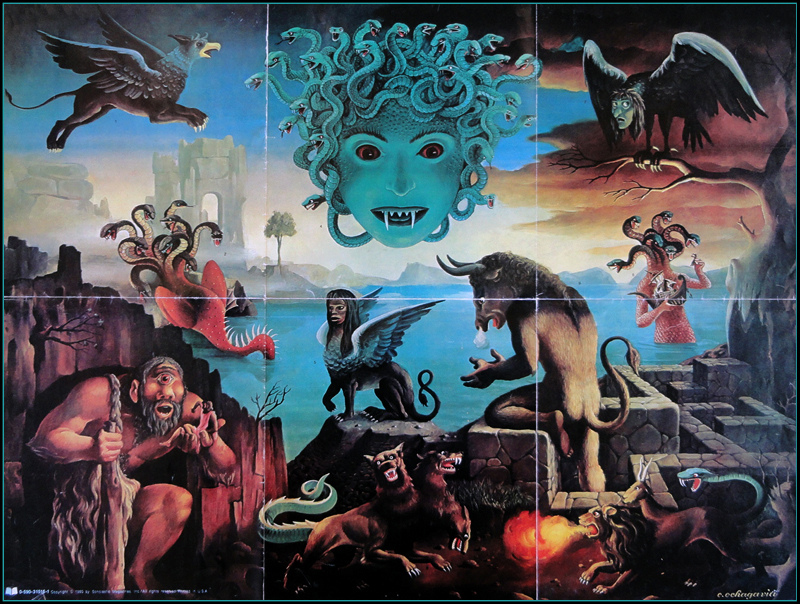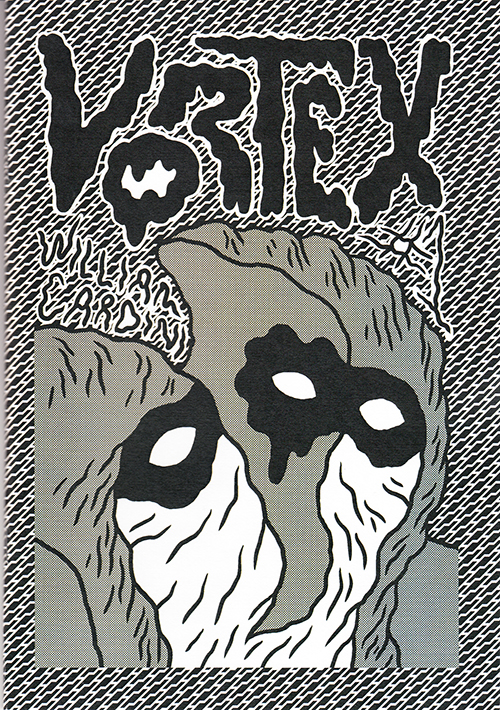Ryan Cecil Smith is one of the most exciting young artists making comics. His minicomics are meticulously designed, packaged, and printed. After I finished the three parts of SF Supplementary File #2, a beautiful redrawing of some scenes from Leiji Matsumoto’s manga Queen Emeraldas, I had some questions for Smith about his process and intent. I was going to just send him an overly enthusiastic email, but then I thought that some y’all might also be interested in what he had to say. So Smith and I sat down (at our computers in different continents) and shot some questions and answers back and forth (through email).
The cover for SFSF #2C, a multicolor Risograph, from Smith’s Flickr.
I’m pleased to present our interview here:
#1: You say on your blog and the cover of the comics that SF Supplementary File #2A and #2B are drawn from Leiji Matsumoto’s manga Queen Emeraldas. Can you tell me more about your process for drawing from Matsumoto’s manga? How do you pick which sections to redraw and how faithful are you to the original work?
Ryan Cecil Smith: In SFSF #2, I was pretty faithful to the original in terms of the content. Like, the panels are laid out the same way and I drew what’s inside all the boxes (mostly). However I tried to draw quickly and not worry about capturing anything of his drawing style. I drew in pencil, between 2B and 10B, so I can’t draw the tightest details, which is good. As for picking the section, well you know A and B and C are all straight, consecutive together. I wonder if that’s not apparent, or is a little confusing? Basically, I chose this segment because I think it represents some great aspects of his work in a small piece of one story. It’s got the long crawls across space, the dreamy narration, and… you know what I mean!
#2: Yeah, it’s clear to me that #2B follows directly on #2A. It seems like #2A starts in the middle of the story, with a battle just ending, which is why I was asking about what segment you selected. Or does the manga not include the build up to Queen Emeraldas blasting the bandit Deathskull across his planet?
RCS: I just thought the preceding part wasn’t as interesting visually, or as a story segment. And I don’t dislike having that conversation about Deathskull as a starting point, in fact I think there is value to keeping it there. To me, this is like knowing the fall of Lucifer occurred between Genesis 1:1 and Genesis 1:2.
A page from Matsumoto’s Queen Emeraldas, via Sean T Collins.
#3: As far as I can tell Queen Emeraldas has never been officially published in English. Are you translating it yourself?
RCS: I translated it with my friend Andrew Brasher, who reads Japanese much better than I do! He has some translations of music zines on his blog.
#4: You’ve published both minis of your own original stories and minis based on other author’s manga. What draws you to reworking these comics instead of telling more of your own stories?
RCS: That’s a great question! I think almost all of my published comics have been retellings or responses to other work. I think maybe I have the strongest urge to create when I see something great (like a movie or book), and my brain is excited, and I want to share my perspective about it. I hope that it feels like a relevant discussion of that thing (like Umezu Kazuo’s Baptism, or Peter Weir’s Picnic at Hanging Rock) and is also an interesting piece of artwork by itself.
A monster drawing by Umezu Kazuo, via Monster Brains.
#5: These Supplementary Files are beautifully printed. I love the risograph printing and the paper they’re printed on. I see they’re printed by Retro Jam Printing in Osaka. How involved are you with the printing? Can you tell me a bit about the printing process for these?
RCS: The way Retro Jam works is you give them the original artwork (digitally or on paper, like I do) and they do all the copies in their shop. I’ve done a lot of printing with them by now, so we have good communication about my particular concerns. I mean, you know a Risograph looks just like a photocopier, so you can easily imagine what the printing looks like. But they have really nice machines, and they have 24 colors of ink. I do my best to prepare good originals for them (I’m talking about having the right contrast, eliminating stray marks, registering everything on paper, etc.) and they print it and do a good job. For me, it’s a little scary handing off a big job to them sometimes, but they’re great at what they do, so what am I worrying about??
#6: Oh wow so a computer isn’t involved in the process at all! Awesome. So if you’re drawing it all in pencil, but also trying to eliminate stray marks and have good contrast, do you do a few drafts of each page or do you just erase and redraw on the same page? Do you use a lightbox to do the registration or are you drawing these on vellum or something transparent?
RCS: Almost every page was a first draft. I treat my originals carefully and I have a process to bring out the best contrast I can get (it’s something like photocopy, white-out, adjust levels, photocopy, re-pencil). I have to use a non-repro blue pencil underneath – that’s how I sketch the layouts, so they don’t get picked up by the Risograph.
A view of the ink drums of Pegacorn Press’s Risograph.
#7: Do you never use a computer in your comics-making process or is that just something you wanted to do for this project?
RCS: I haven’t used any digital steps in my comics for the last 3 years, with maybe 1 or 2 exceptions. I am not analog “on principle,” but it fits the way I work and the tools I have. In fact I don’t even like scanning my work, because I think I have a crappy scanner! If I was confident in my technological capabilities, I would use a computer more often.
#8: What’s next for you? Are you going to continue the SF series or are you going to do something different?
RCS: Yep, SF #2 is what I’m doing right now. I was working on Two Eyes of the Beautiful III for a while, but it wasn’t working out, so I put it “on hold.” I’d like to continue with that story in the future. I have more ideas for small zines than ideas for bigger projects. I want to make some more work that draws from my real life and my environment.
A scan of a spread from my copy of SFSF #2C. You can really see Smith’s pencil marks.
P.S.: Thanks so much to Ryan for taking the time to answer my detailed questions. I’m a process nerd. You can buy all three parts of SF Supplementary File #2 at Smith’s site, as a bundle or separately, or at Domy Books in Austin whenever they have them in stock (they sell out quickly!). If you’re curious about Smith’s other manga redrawing project, Two Eyes of the Beautiful, his life as an American cartoonist teaching English in Japan, and much more, tune your browsers to Ao Meng’s Skype interview with Smith at Novi Magazine.

